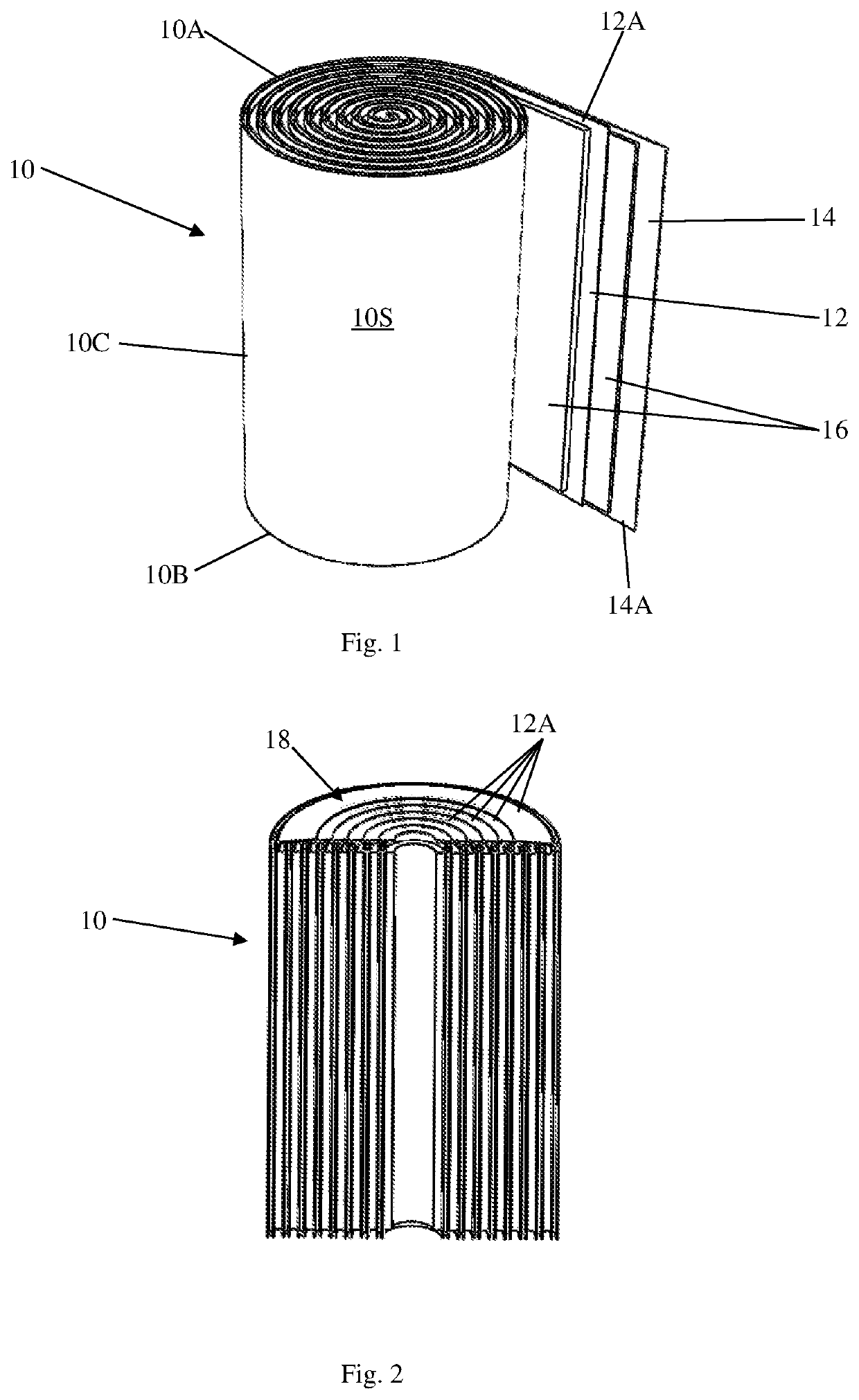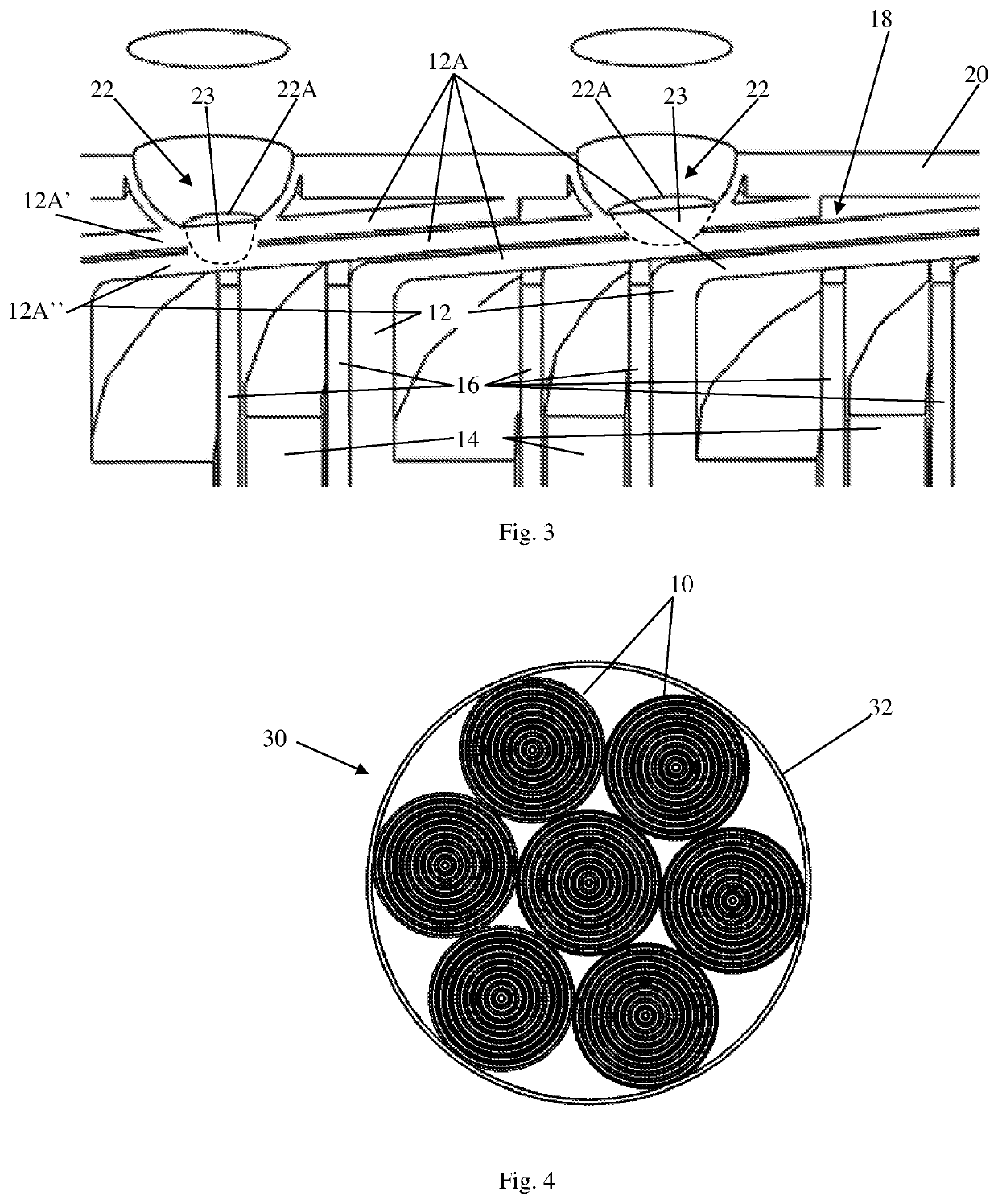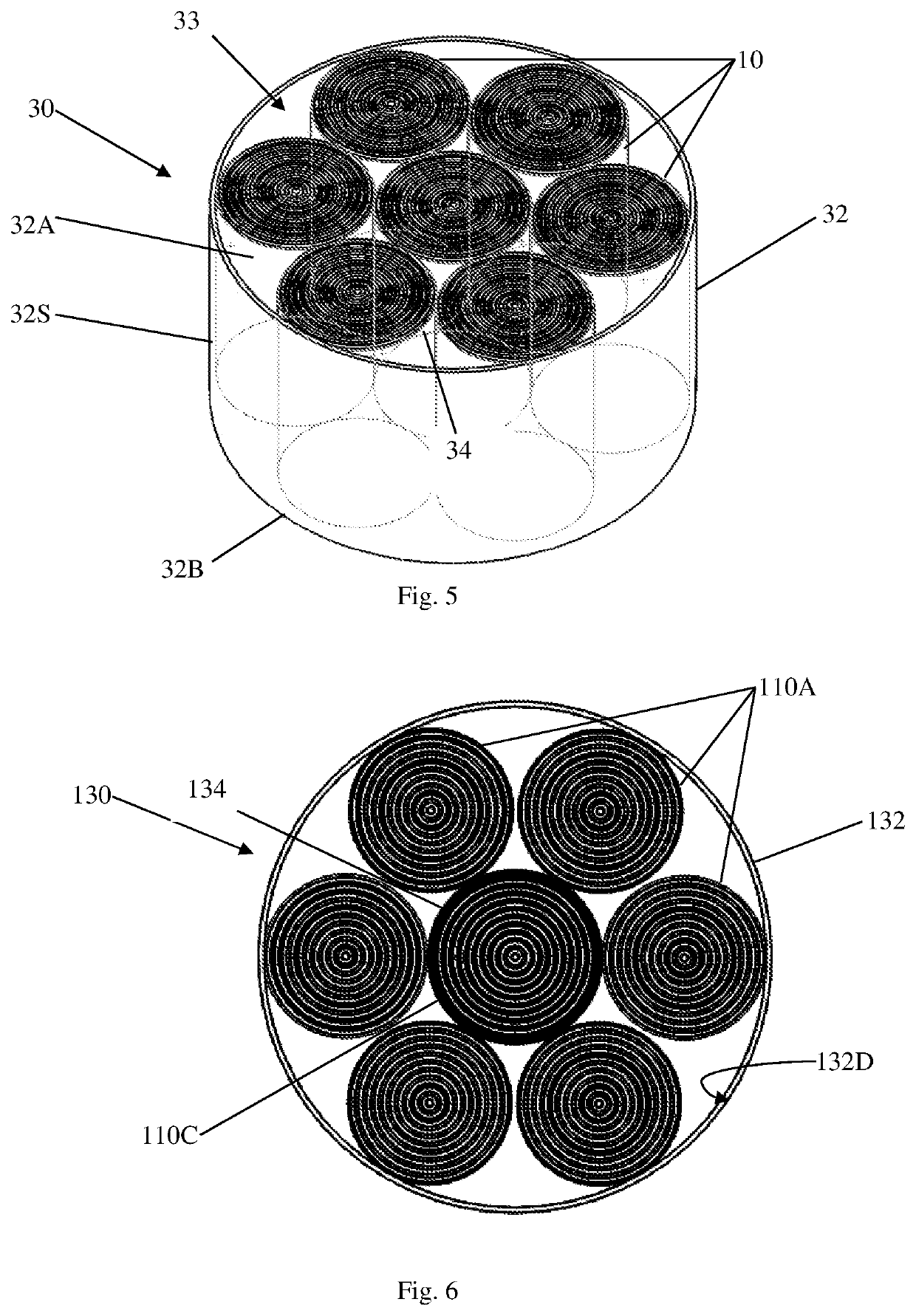Battery
a rechargeable battery and battery pack technology, applied in the field of batteries, can solve the problems of battery open-circuit potential decline, problem of parallel recharging, and bulky size of battery packs
- Summary
- Abstract
- Description
- Claims
- Application Information
AI Technical Summary
Benefits of technology
Problems solved by technology
Method used
Image
Examples
first embodiment
[0049]Referring to FIGS. 4 and 5, shown are a plan view and a perspective view of a battery housing 32 showing one arrangement of a plurality of electrode assemblies 10 for a high capacity battery 30 in accordance with the invention. The battery assemblies 10 may each comprise a jelly roll 10 in accordance with that described with respect to FIGS. 1 to 3. The plurality of electrode assemblies 10 is preferably arranged substantially in parallel with each other within the single battery housing 32. In this embodiment, the battery housing 32 comprises a battery can 32. The battery can 32 is substantially cylindrical in shape with an upper open end 32A and a lower closed end 32B. At least the closed end 32B of the battery can 32 is preferably formed of an electrically conductive material such that said closed end 32B forms, in use, a negative terminal for the battery 30. A side wall 32S of the can 32 surrounds a battery compartment 33 preferably defining a single shared volume for recei...
second embodiment
[0056]Referring to FIGS. 6 and 7, shown are a plan view and a perspective view of a battery can 132 showing another arrangement of a plurality of electrode assemblies 110 for a high capacity battery 130 in accordance with the invention. Once again, the battery electrode assemblies 110 may each comprise a jelly roll 110 in accordance with that described with respect to FIGS. 1 to 3. The plurality of electrode assemblies 110 is arranged substantially in parallel with each other within the single battery can 132. A current collector plate (not shown) is arranged to be directly electrically in contact with the first ends of the plurality of electrode assemblies 110.
[0057]The current collector plate may be directly electrically in contact or in connection with the first ends of the plurality of electrode assemblies 110 by the same or similar means described with respect to the embodiment of FIGS. 4 and 5.
[0058]In FIGS. 6 and 7, it can be observed that the plurality of electrode assemblie...
third embodiment
[0061]Referring to FIGS. 8 and 9, shown are a plan view and a perspective view of a battery can 232 showing another arrangement of a plurality of electrode assemblies 210 for a high capacity battery 230 in accordance with the invention. Once again, the battery assemblies 210 may each comprise a jelly roll 210 in accordance with that described with respect to FIGS. 1 to 3. The plurality of electrode assemblies 210 is arranged substantially in parallel with each other within the single battery can 232. A current collector plate (not shown) is arranged to be directly electrically in contact with the first ends of the plurality of electrode assemblies 210.
[0062]The current collector plate may be directly electrically in contact or in connection with the first ends of the plurality of electrode assemblies 210 by the same or similar means described with respect to other embodiments.
[0063]In FIGS. 8 and 9, it can be observed that the plurality of jelly rolls 210 is arranged within the can ...
PUM
| Property | Measurement | Unit |
|---|---|---|
| height | aaaaa | aaaaa |
| pressure | aaaaa | aaaaa |
| electrical | aaaaa | aaaaa |
Abstract
Description
Claims
Application Information
 Login to View More
Login to View More - R&D
- Intellectual Property
- Life Sciences
- Materials
- Tech Scout
- Unparalleled Data Quality
- Higher Quality Content
- 60% Fewer Hallucinations
Browse by: Latest US Patents, China's latest patents, Technical Efficacy Thesaurus, Application Domain, Technology Topic, Popular Technical Reports.
© 2025 PatSnap. All rights reserved.Legal|Privacy policy|Modern Slavery Act Transparency Statement|Sitemap|About US| Contact US: help@patsnap.com



